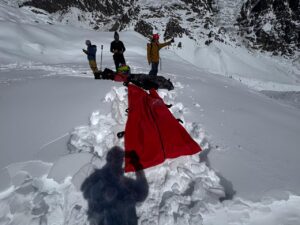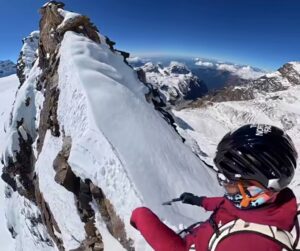A new report has found that glaciers in the Hindu Kush and Himalaya have disappeared 65% faster in the 2010s than in the previous decade.
“As it gets warmer, ice will melt, that was expected, but what is unexpected and very worrying is the speed,” lead author Philippus Wester told AFP. “This is going much faster than we thought.”
Floods and drought
The report, produced by the International Centre for Integrated Mountain Development (ICIMOD), studied the full swathe of the highest mountain range on Earth, from Afghanistan to Myanmar. The data makes for sobering reading.
Experts project that the world’s current emissions could cause glaciers to shrink 80% by 2100. Water availability from glacial melt should peak around 2050 before declining. The rapid melting will inundate downstream flooding and also prolonged droughts later, as the flow diminishes.

The distribution of permafrost (in green) and glaciers (in blue) from the report. Photo: ICIMOD
Snow cover will also decrease. Depending on how much temperatures rise (predicted to be between 1.1°C and 4°C), snow cover could fall between 1% and 26%. Meanwhile, “episodes of heavy snowfall are already increasing,” and could become more frequent and intense.
In 2019, the ICIMOD produced another report that considered glacial melt under the most optimistic climate change scenario, a rise of just 1.5°C above pre-industrial levels. Even in that case, the Himalaya would lose a third of its glaciers. Since then, the world has failed to curb emissions, and climate change models look bleaker than ever.
A quarter of the world likely impacted
Nearly two billion people depend on the Himalayan ecosystem. Ice and snow feed 12 rivers that provide fresh water to roughly a quarter of the world’s population. Of those, 240 million mountain inhabitants are already on climate change’s frontline and must deal with crop failures, landslides, and livestock fodder shortages.
“Cryospheric change will likely alter the very fabric of mountain societies, from deadlier cascading hazards and widespread displacement to deep ripples on traditional livelihoods, adaptation knowledge, and spiritual beliefs,” the report states.
The report, co-authored by 35 researchers from 12 different countries and 23 institutions, calls for urgent international and regional cooperation to prepare for “inevitable near-term loss and damage.”






